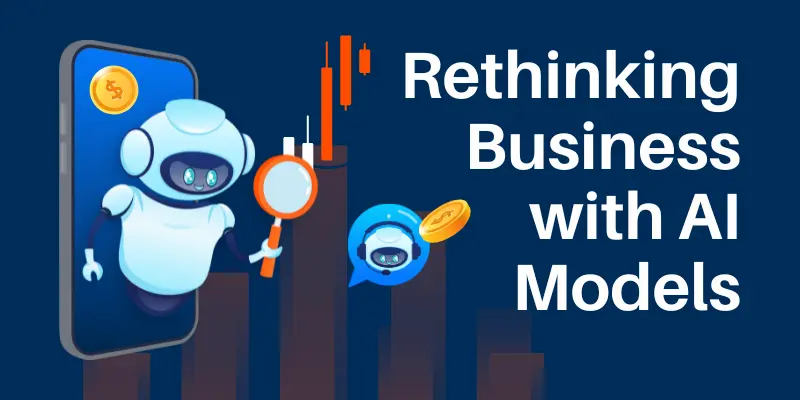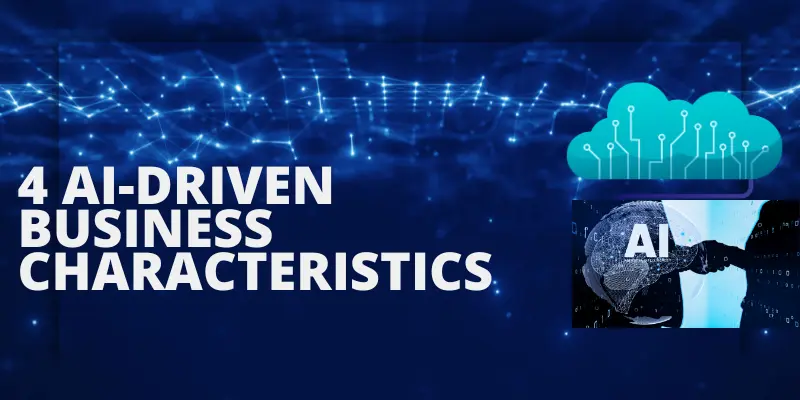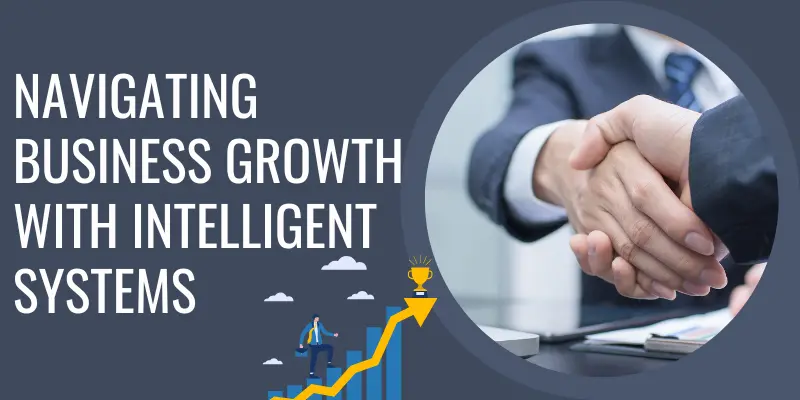AI-Driven Business Strategies
Published: 16 May 2025
Many organizations today are exploring how to use AI-driven business models to stay ahead in a fast-changing world. These strategies focus on integrating Artificial Intelligence into core operations to drive value and build a competitive edge. In my work helping startups, I’ve seen how automating routine tasks and enhancing decision-making with data-driven insights can completely transform how a business runs. It doesn’t just boost efficiency – it sparks real innovation.
According to a McKinsey report, AI could add nearly $13 trillion to the global economy by 2030, showing just how big the benefits can be. That’s why understanding, using, and fully embracing the importance of an AI business model is crucial. Whether your organization is just starting out or already growing, using AI for growth isn’t optional anymore – it’s the smart move for the future.
Rethinking Business with AI Models
From my experience working with emerging tech companies, I’ve seen how powerful AI technologies can be when used to create, deliver, and capture value in new and innovatively smart ways. Unlike traditional business models that rely on manual processes, businesses driven by AI now integrate machine learning, data analytics, and automation to enhance both speed and quality.

The goal isn’t just faster operations, but true operational efficiency and long-term scalability. The AI factory plays a key role here – it’s a systematic framework that continuously processes, refines raw data, and turns it into valuable insights. I often advise startups to invest early in interconnected components like data pipelines and machine learning models, which are essential to automate decision-making effectively.
Today’s AI-focused business models go beyond theory. They include real-world examples like AI product as a service (PaaS), where AI-enhanced products offer ongoing services – think of home assistants that adapt based on user interactions. Companies now gather, analyze, and sell insights through AI data monetization using predictive analytics. AI-driven platforms, such as digital platforms used by ride-sharing apps, use real-time data to optimize routes, pricing, and match services to customer needs. Influential experts like Professor Karim Lakhani from Harvard Business School and Professor Marco Iansiti, who co-lead the online course AI Essentials for Business, highlight how the AI factory enables predictions, pattern recognition, and process automation. This lets businesses anticipate customer behavior, manage inventory needs, and make decisions proactively. I’ve also seen how these tools help teams spot emerging trends, avoid potential risks, and adapt to change smoothly, all while cutting repetitive tasks in customer service or medical image analysis. To stay competitive, every organization should embrace AI. These AI business model characteristics are now critical to value creation, driving growth, and enabling digital transformation. As Jen Stave, launch director of Harvard’s Digital Data Design (D³) Institute, shares on The Parlor Room podcast, AI’s transformative impact is already visible across industries.
4 AI-Driven Business Characteristics
As someone who’s helped businesses adopt AI-driven business practices, I’ve seen how success begins with the right foundation. At the heart of every effective AI strategy is datafication – a process that turns customer interactions, operational processes, and market trends into usable data.

This data, when properly collected, processed, and analyzed, becomes the cornerstone of AI business models. I often tell clients that this stage isn’t just about optimizing AI systems – it’s about extracting valuable insights to enhance both decision-making and strategic planning. I remember discussing the famous Google acquisition of Nest in 2014, where a smart device transformed how homeowners manage temperature, turning basic user activity from traditional thermostats – like adjusting fuel, furnace, and heat – into actionable insights. By understanding heating and cooling patterns, Nest could help users optimize energy use, often saving around eight percent annually, proving that value creation and value capture can happen through something as invisible as smart data.
Once you have data, the next step is choosing the right algorithm. In my work, I always emphasize how this characteristic makes or breaks AI implementation. You need to understand the type of problem you’re solving before you can build algorithms using machine learning models. This means not just collecting information but training AI to recognize patterns, make predictions, and automate decision-making. I recall one client trying to emulate Netflix’s recommendation algorithm, which relies heavily on viewer preference data to boost engagement, viewing times, and subscriber satisfaction in a competitive market. The goal is always to align your AI business models with real business goals, track market insights, and constantly adapt using new data. Experts like Iansiti in AI Essentials for Business stress the importance of data-driven decision-making, and I couldn’t agree more – success lies in knowing how to choose and apply what your organization truly needs.
Navigating Business Growth with Intelligent Systems
In today’s AI-driven business world, leaders must go beyond just adopting tools – they must turn their entire organization into a datafication powerhouse. From every customer interaction to operational processes, everything must be collected, processed, and analyzed to gain valuable insights.

I still remember when I helped a small e-commerce client integrate AI systems into their daily operations – suddenly, we could detect market trends, improve strategic planning, and make better decision-making calls based on real-time data. This shift became the cornerstone of their new AI business model, allowing them to optimize logistics, predict buying patterns, and grow faster than their competitors.
We can take lessons from Google Nest—when they launched their smart device in 2014, it wasn’t just about tracking user activity or heating schedules. It was about turning traditional thermostats into platforms for actionable insights. By recognizing cooling patterns, homeowners could optimize energy use and save money, sometimes up to eight percent annually. This is a perfect example of value creation and value capture through AI systems. Even a furnace can become smarter when driven by data. Similarly, businesses today must treat every process, from HR to supply chain, as a data-rich opportunity to drive forward. That’s where small business automation solutions come in—empowering companies of any size to harness the same kind of data-driven efficiency and intelligence once only available to major enterprises.
We can take lessons from Google Nest—when they launched their smart device in 2014, it wasn’t just about tracking user activity or heating schedules. It was about turning traditional thermostats into platforms for actionable insights. By recognizing cooling patterns, homeowners could optimize energy use and save money, sometimes up to eight percent annually. This is a perfect example of value creation and value capture through AI systems. Even a furnace can become smarter when driven by data. Similarly, businesses today must treat every process, from HR to supply chain, as a data-rich opportunity to drive forward. That’s where small business automation solutions come in—empowering companies of any size to harness the same kind of data-driven efficiency and intelligence once only available to major enterprises.
For any company to thrive, aligning business goals and objectives with new data and market insights through data-driven decision-making is no longer optional – it’s a survival skill. Experts like Iansiti, who shaped the ideas in AI Essentials for Business, stress how choosing the right strategy enables companies to unlock exponential value.
Conclusion
So guys, in this article, we’ve covered AI-driven business strategies in detail.
From my experience consulting with both startups and established firms, I recommend that businesses begin with small, measurable AI integrations – especially in customer service and data analytics – to build confidence and capability. If you’re serious about future-proofing your company, start exploring practical AI tools today and take the first step toward smarter operations. Start now – because staying still means falling behind.
FAQs
AI-driven business strategies are plans that use artificial intelligence to improve how a business runs. They help companies make smarter decisions, automate tasks, and better understand customers. These strategies rely on data, algorithms, and tools like machine learning.
Yes, there are many types depending on what a business needs. Some focus on automation, others on customer service, data analysis, or product recommendations. A small business might use chatbots, while a big company may use AI to study market trends.
Automation is when tasks are done automatically by machines or software, like data entry. AI goes further – it learns from data, improves over time, and can make decisions. AI-driven automation is smarter because it adapts and predicts, not just repeats.
AI analyzes behavior, purchases, or feedback to help companies understand what customers want. It can recommend products, personalize experiences, and even answer questions using chatbots. This leads to better service and happier customers.
Yes, predictive analytics is a popular AI-driven strategy. It uses past data to guess what might happen in the future, like which product will sell more next month. Businesses use it to plan better and reduce risks.
Absolutely! Most companies combine strategies—for example, using AI for both automation and customer insights. This creates a smarter, more connected business system.
Machine learning is a type of AI where the system learns from data instead of being told what to do. As a strategy, it helps businesses recognize patterns, improve services, and make accurate predictions. It’s useful in things like fraud detection, demand forecasting, or personalized marketing.
It depends on the tools and goals. Some AI solutions, like chatbots or analytics tools, are affordable, even for small businesses. Start small and scale up as you see results.
AI isn’t perfect—it learns from data, so mistakes can happen. That’s why it’s important to monitor and update your systems. Having a human check big decisions is still a good idea.
Yes! Many AI tools are designed for non-technical users with simple dashboards and support. You can also work with consultants or use beginner-friendly platforms that offer guides and automation options.

- Be Respectful
- Stay Relevant
- Stay Positive
- True Feedback
- Encourage Discussion
- Avoid Spamming
- No Fake News
- Don't Copy-Paste
- No Personal Attacks

- Be Respectful
- Stay Relevant
- Stay Positive
- True Feedback
- Encourage Discussion
- Avoid Spamming
- No Fake News
- Don't Copy-Paste
- No Personal Attacks





